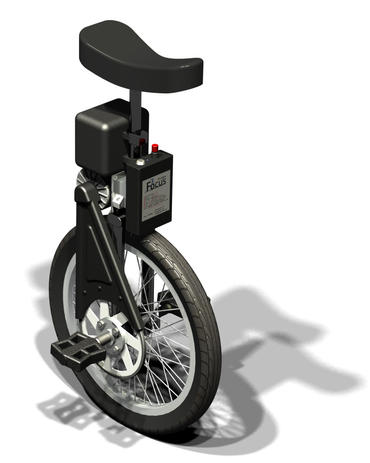
The SBU stays upright using electronics including accelerometers and gyroscopes with sophisticated balancing algorithms.
A childhood memory, courtesy of my CNET colleague Jeff Sparkman: “My best friend rode a unicycle to school in junior high. At my urging. Oddly, we weren’t as popular with the ladies as one would expect.”

Well, Jeff, if you and your friend had been riding the electric self-balancing unicycle from Focus Designs, half the girls at Monte Vista Middle School probably would have plastered foxy pictures of you and your bud inside their lockers.
Riders of this 21st century bike don’t need to pedal; in fact there are no crank arms, just foot rests. The 24.6-pound SBU stays upright using electronics including accelerometers and gyroscopes with sophisticated balancing algorithms.
Still, the “self-balancing” part of the moniker here is slightly misleading. The SBU is actually a rider-assist vehicle that combines at least a bit of the user’s balancing skill with control mechanisms. Think of it as the Segway of unicycles.
Focus Design says maneuvering the SBU is about half as difficult as riding a conventional unicycle (a rather subjective assessment), with an average user needing two hours or so of practice before he or she can enjoy a decent ride (presumably one that doesn’t involve a face-plant in the bushes).
Riders control the speed of the cycle by leaning forward or backward. According to the company, an average male rider can easily go 8 mph on a flat surface.
But don’t expect to see too many of these around campus–or the circus–anytime soon. A limited release of 10 SBUs is slated for early November, with the cycles going for $1,500 each. And this isn’t just a first-come, first-served affair. Riders will also be selected based on a brief phone interview, in which hopefuls might want to avoid mentioning their proclivity for bike crashes.






